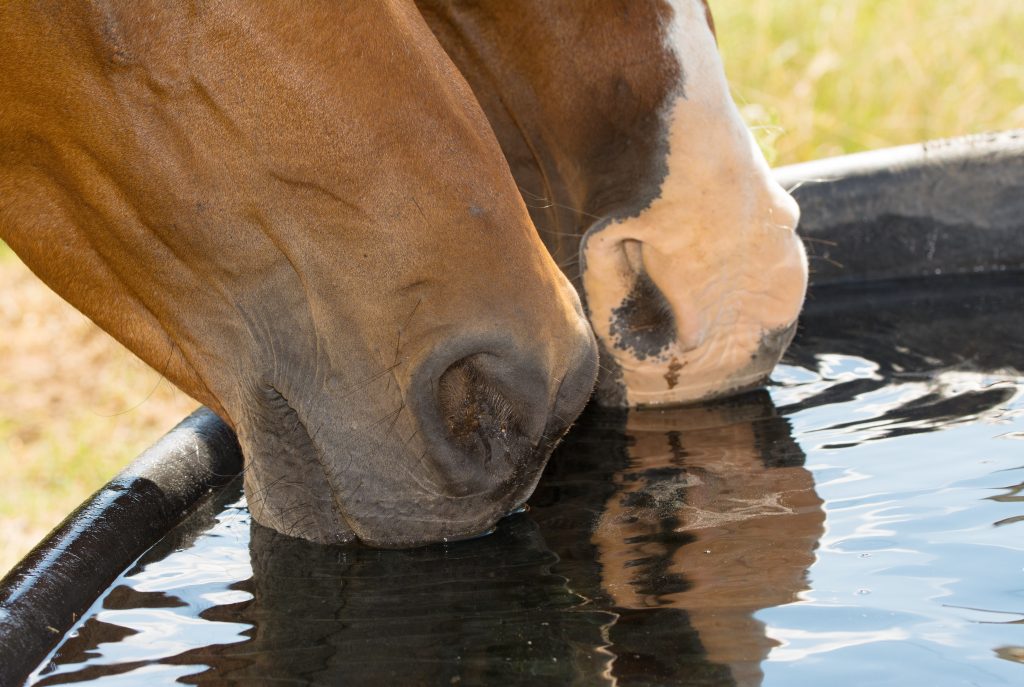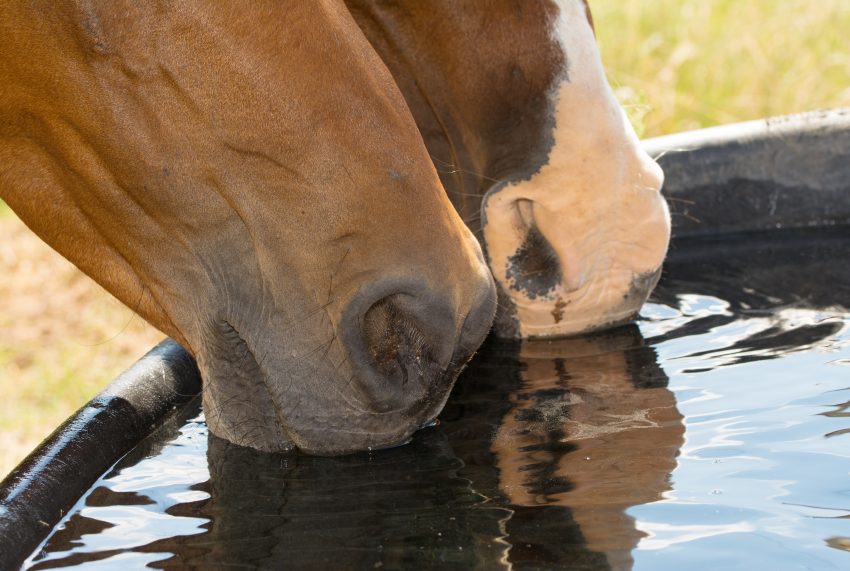
It’s mid-March, which means the hot summertime temperatures are just around the corner. While people who live in the southern areas of the United States are undoubtedly used to the temperatures, those who head south for events might not be as prepared.
Regardless, it’s important to understand how soaring temperatures and humidity can affect our horses.
The most important thing horse owners and managers need to know is that their horses are drinking enough water to maintain good health and performance. They must also be aware enough to back off an animal’s activity level when necessary.
A horse can become dehydrated in as little as two to three hours, and the matter can be complicated further because horses may not drink enough even when provided water.
Don’t forget you can take the following steps to help your horse combat the heat this summer.
Provide Shade
You can take advantage of conductive cooling, where a horse can transfer heat through space to an object cooler than it is. For example, standing under trees allows a horse to radiate some heat to leaves, which are continually cooled by their own evaporation. Your horse needs protection from the direct sun when turned out. Make sure the shade will be accessible throughout the time they are turned out.
Provide Fresh Water
Your horse should always have fresh and accessible water no matter the temperature and should be able to drink during and after exercise. Make sure it is frequently changed and that your horse is drinking appropriately.
Horses can dissipate most of their excess body heat through sweating, just like we do. When a person sweats, the electrolyte concentration goes up in the blood, resulting in thirst. A horse’s blood does not increase in electrolyte concentration with sweat loss, so the animal may experience a reduced stimulus for thirst.
Access to a salt block may encourage your horse to drink more while in the pasture or stalled. Similarly, water supplemented with electrolytes may help your horse in replenishing the salts they lose from sweating. If your horse hasn’t had electrolytes before, check with your veterinarian or a respected source to find how much to give.
Keep Air Moving
Convection – heat that is lost due to air movement – is another way an animal loses heat. Supplying fans or keeping the horse in an area with wind flow is ideal. Fans with higher velocities produce more effective cooling.
Cool Your Horse Down
During the months of high temperatures, make sure to spend more time cooling your horse down. If possible, bathe the horse fully to get rid of sweat and speed up the cooling process. To help cool a hot horse, apply cool – but not cold – water to areas that have large blood vessels close to the surface, such as the inside of the legs and the neck. Water temperature is key. Cold water can result in vasoconstriction which can limit blood flow to the horse’s skin. Continuous running water also has been shown to cool the horse faster.
Know Signs of Heat Stroke and Dehydration
Your horse can be affected by heat stroke and dehydration without working intensely, so pay attention. Common signs of heat stroke include profuse OR lack of sweat, lethargy, slow capillary refill time, and elevated heart and/or respiratory rate, while dehydration symptoms include poor skin elasticity, and slow capillary refill time, and dry/tacky mucous membranes. As always, never hesitate to call your veterinarian for help.

